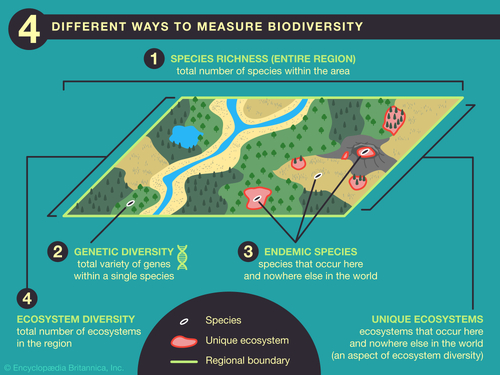Measuring Biodiversity
Onderdeel van
Trefwoorden
Learn about the ways of measuring biodiversity
Biodiversity is often measured as the species count in a given area, be it a single tree, an ecosystem, a landscape or region, or the planet as a whole. However, biodiversity may be measured in other ways.
Biodiversity may be measured as genetic diversity
Genetic diversity is the total variety of genes within a single species. We know that species are made up of a number of different individuals, and each individual is made up of thousands of individual genes. Pooling all of the genes in a species gives you a measure of the genetic variety of the species.
Biodiversity may be measured as the diversity of a region's endemic species
Endemic species are restricted to one location; they do not occur anywhere else in the world. Several examples of endemic species exist, including Hawaiian honeycreepers (which are endemic to Hawaii), Javan rhinoceroses (which live on the Indonesian island of Java), and marine iguanas (which are found only in the Galapagos Islands). Endemic species have relatively small ranges, and they tend to be much more vulnerable to human activity than are more widely distributed species, because it is easier to destroy all the habitat in a small geographic range than in a large one. Thus, the presence of endemic species in an area provides additional insight into the area’s ecological quality or value.
Biodiversity may be measured as ecosystem diversity
A region, whether it is a landscape, a country, or a large swath of a continent, may be dominated by one or more ecosystems. The greater the variety of ecosystem types, the greater number of species that could potentially live there. Consequently, ecosystem diversity (the total number of ecosystems in a region) can be used to get an idea of its biodiversity.
Afbeelding credits
Icon afbeelding: Fletcher Hotel
